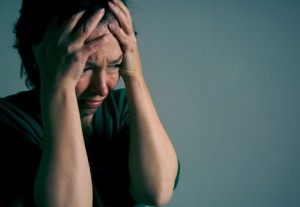Mastitis is an infection that develops in the tissue of the breast and causes symptoms such as warmth, pain, swelling and redness of the affected breast and sometimes there is chills and fever.
This condition usually affects lactating women who breast feed their babies, but in rare cases it can also happen in non-lactating women. Mastitis develops in the first three months after delivery of the baby, but it can happen later during breastfeeding.
Mastitis can cause discomfort and makes the affected woman feel tired along with difficulty in caring for the child. Understandably, these force the mother to wean the baby earlier.
Common symptoms of mastitis

- Itching, pain, swelling, redness, heat and tenderness of the affected breast
- A lump can be felt on the affected breast
- Tenderness of the nipple and some discharge
- Lymph nodes found under the arm is tender and swollen
- Flu-like symptoms
Mastitis that is not properly treated can cause complications such as gangrene where the infection can spread to the bloodstream and cause bacterial infection of the blood and failure of the vital organs. The affected person can experience fainting, high fever, difficulty in breathing, loss of consciousness and confusion. Sometimes, mastitis can cause formation of an abscess which can spread to other areas of the body.
Mastitis is caused by staphylococcus aureus bacteria which are normally found in the skin, but it can cause infection when they penetrate skin through tears and cracks. Mastitis develops when bacteria penetrates through a crack in the nipple. Women who are breastfeeding usually end up with nipples that are dry and crack easily. Overproduction of breast milk can also cause mastitis. Mothers who wean their babies suddenly can suffer from mastitis due to engorgement of the breast and irregular breastfeeding of babies. Poor hygiene can also increase the risk for mastitis. Take note that women who have cracked and dry nipples and have a bacterial infection in the breast have a high risk of developing mastitis.
Treatment and home remedies for mastitis
- Apply warm and cold compress on the affected area. Warmth helps in the circulation and flow of milk while a cold compress helps in relieving the discomfort.
- Massage the affected breast since it helps in unblocking the ducts and lessen the swelling.
- Drink plenty of liquids in order to help in flushing out the infection from the body as well as promote proper flow of milk. Drink at least 10-12 glasses every day.
- Take plenty of rest in order to help the body recover and heal.
- Continue breastfeeding the baby regularly since it helps in improving the condition and empties the affected breast. If possible, the mother should try to breastfeed the baby on the affected breast for a couple of hours.
- Place cold cabbage leaves on the affected breast since it helps minimize infection, inflammation and pain.
- Wear comfortable loose clothing to prevent friction against the nipples.
